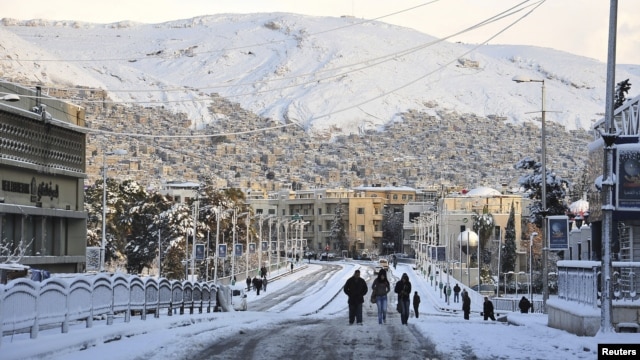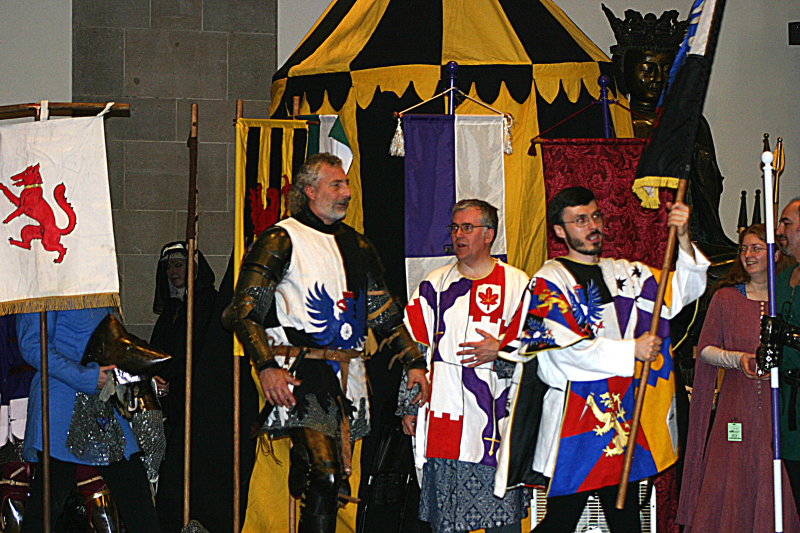Just about every day my first read is Juan Cole's blog
Informed Comment. Cole is a historian of the Middle East and has taken it on as his personal duty to comment every day on important issues. When it comes to the Middle East and Islam, you can hardly have a better source.
Today Cole posted one of the best things he has ever written, a response to another blog in which the claim is made that Islam is uniquely violent, and that there is a big difference between the Christian approach to worldly power and the Islamic one.
What Cole says here corresponds to my own understanding of the relationship between the formal doctrines of religion, what the founding documents say about it, and what people actually do in the context of their religion. My own understanding results from reading about 20 years ago a short world history of Buddhism, in which it was sufficiently demonstrated to me that just about any thing that could be called Buddhism had been called Buddhism, including the interesting notion that no one should be a monk and everybody should be married and that was true Buddhism. I concluded from that experience that if a religion wants to be more than just a local cult in an isolated village, it will have to diversify and eventually become a single religion in name only.Further, that if you really want to understand what a given religion means in a given context studying Scripture and theology will not do the trick.
Cole provides us today with a detailed discussion of Christianity and Islam in regards to their promotion of violence or their relationship to political power. I am giving an extensive excerpt here but there is quite a bit more and all of it good.
Jesus and Muhammad and the Question of the State
Posted on 04/25/2013 by Juan Cole
I’ve always liked Andrew Sullivan even when I disagree with him. I’m going to disagree with him, or more specifically Alexis de Tocqueville and one of his readers who quotes him:
“Muhammad brought down from heaven and put into the Koran not religious doctrines only, but political maxims, criminal and civil laws, and scientific theories. The Gospels, on the other hand, deal only with the general relations between man and God and between man and man. Beyond that, they teach nothing and do not oblige people to believe anything. That alone, among a thousand reasons, is enough to show that Islam will not be able to hold its power long in ages of enlightenment and democracy, while Christianity is destined to reign in such ages, as in all others.”...
You can’t compare Christianity and Islam on the basis of this kind of characterization of the founders of the two religions. The characterization is in any case unfair (the New Testament texts imply just as many ‘scientific principles’ as does the Qur’an, e.g. They think the world has three levels, that there are demons and angels, etc. etc.)
First of all, we know very little about the lives of Jesus (d. circa 30-33 CE) or Muhammad (d. 632 CE). ...
The idea that, as de Tocqueville alleged, very early Christianity made no doctrinal demands about the relationship of the believer to power is not clearly in evidence. Take St. Peter (2 peter 2:1-2:17: “But false prophets also arose among the people, just as there will be false teachers among you, who will secretly bring in destructive opinions.”) Wouldn’t that be a community problem that would have to be dealt with collectively? Also very surprised by this allegation would have been the masses of Christians killed by Christian states for being heretics. And, just for instance, Charlemagne had 4500 Saxon followers of Woden (you’ve all seen the movie Thor) beheaded in 782 because they wouldn’t accept Christianity. That is a lot of heads to be lost to a religion that makes no power demands. Not to mention that modern Christian fundamentalism has cleverly found ways of re-importing selective legal injunctions from the Hebrew Bible into Christianity.
...
The Qur’an, contrary to what some researchers such as John Wansbrough suggested, seems to be pretty well attested as an integral text fairly early on, maybe even better attested than the entire New Testament in the first century after its composition. The sayings attributed to Muhammad were not collected and written down for some 200 years after the Prophet’s death, and I personally don’t consider many of them historically reliable.
The New Testament picture of Jesus is full of contradictions. At some points he says to turn the other cheek and forgive enemies. At other points he says, “I come not to bring peace but a sword” (Matthew 10:34). Scholars have wondered if Jesus was a Zealot, a highly political and revolutionary movement. Or was he a mystic similar to those who wrote the Dead Sea Scrolls? Frankly we have no idea whether he intended to build a state or not... No two academic books I’ve ever read on the life of Jesus and early Christianity have agreed about these issues.
Even if Jesus really was an apolitical pacifist, only a tiny number of Christians in history has ever agreed with him about that. Even if his statement about rendering to Caesar implied a separation of religion and state (unlikely), most Christians in history haven’t been willing to do that....
So these ideas in very early Christianity are anyway irrelevant to practical politics in later Christianity, which saw all kinds of political arrangements...
As for Muhammad, it is not entirely clear what his position was in Medina. He is often depicted as a theocrat. But it appears from the Qur’an that when he first went there in 622 he was more like a community organizer, balancing the needs of the Muslim, Christian, pagan and Jewish communities in the area. The stories of how he allegedly fell out with the Jews there are very late and have been questioned by some scholars. The view of him as a kind of king could well be a projection back on him by later writers of the Umayyad and Abbasid dynasties, after forms of Muslim kingship and empire had emerged. Common assertions that the Qur’an disallowed paganism or allowed aggressive war on pagans are not borne out by the Qur’an. There is, contrary to de Tocqueville, very little law or politics in the Qur’an.
Much of fundamentalist Muslims’ ideas about religion-state relations are shaped by the Hadith literature, the oral sayings and doings attributed to the Prophet, which, as I said, were collected centuries after his death and I doubt most academic historians would consider them reliable. (I know saying so will offend some of my readers, but, well, I’m a historian.) ...
As with Christianity, there are almost no forms of political organization Muslims haven’t tried out, from monarchy to republic, from anarchism to democracy. So all those laws and political principles in the Hadith haven’t actually been determinative. Contemporary Muslim fundamentalism does dream of using them as a blueprint, but since that enterprise isn’t actually practical, they don’t get very far. Even Iran and Saudi Arabia are mostly governed by modern bureaucratic rationalism of a sort Max Weber would readily recognize.
...
Contrary to what de Tocqueville imagined, the Muslims have been just as adaptable as Christians to the main forms of social organization that came out of the Enlightenment. He was writing at a time when many Muslims lived under the Ottoman Empire, which seems to have shaped his image of the religion. Somehow Islam has handily survived the Ottoman demise. And what de Tocqueville rather dishonestly did not bother to mention was that Christianity has had just as much trouble with those principles as Islam has. There was that little Syllabus of Errors when the then Pope condemned democracy, popular sovereignty, separation of religion and state, scientific rationalism, etc. Later Popes even tried to prevent Catholics from voting in elections because democracy was considered a modernist heresy. As late as Franco’s Spain, the Spanish church was a pillar of dictatorship. Eventually the church made its peace with democracy (partly through Vatican II, which largely repealed the Syllabus of Errors). Islam is likewise coming to terms with democracy, however contentious and uncertain that process has been (Indonesia, Turkey, Tunisia, etc. etc.)
Many 19th century Christians imagined that Islam was on its last legs and that all the Muslims would convert to Christianity. They thought the same of Hinduism and Buddhism. They mostly were very wrong. De Tocqueville’s arrogance and simplistic view of the original ‘essence’ of the founders of the two religions was a profound set of errors. In fact, by the end of this century, some 30% of the world could well be Muslim, whereas Christianity will likely be a shrinking proportion of humankind, just for demographic reasons. Not to mention that most “Christian” countries contain pluralities of non-religious people. Many, such as Sweden or Eastern Europe, have non-religious majorities. Significant proportions of Turks, Tunisians, Uzbeks, etc. in the Muslim world also report that they aren’t interested in religion.
It is not impossible that modern consumerism, individualism and technology might gradually undermine religion, so that 200 years from now neither Christianity nor Islam will be central to most peoples’ lives.
So, a) Muslims aren’t more prone to violence or terrorism than members of other religious communities because of the character of very early Islam and b) you can’t read off the differences between Christians and Muslims from a superficial depiction of the two founders.




